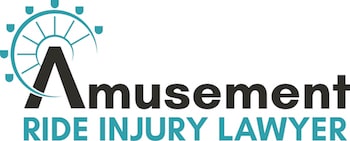Whiplash
Whiplash is the sudden acceleration to deceleration force that forces the head and neck in a back and forth motion. This injury can result from rides that spin, like the tilt-a-whirl, on roller coasters that make quick turns, and any other ride that speeds up or stops suddenly. Roller coasters without a headrest behind the seat can be even worse if whiplash were to occur because there would be nothing to stop the head from being forced backwards.
Common Symptoms
Whiplash can be very minor or can lead to severe symptoms associated with it. The symptoms associated with whiplash are:
- Neck pain, neck stiffness
- Headache
- Back pain, shoulder pain
- Dizziness
- Nauseousness
- Jaw pain
- Arm pain
- Eye problems
- Ear pain
Usually whiplash symptoms only last a few days or weeks and go away on their own. It is best to seek medical attention if the pain is severe or effecting your daily functioning. Heat and ice is suggested for reducing pain, as well as an anti-inflammatory medication. Whiplash can also lead to something called whiplash associated disorder that can have symptoms like insomnia or other sleep disorders, anxiety, depression, stress, and dependency on drugs. Whiplash can also vary in degrees of seriousness, because it can damage the bones, soft tissue, or both. Severe cases of whiplash or whiplash associated disorder may need to be treated with prescription medication, massage therapy, and physical therapy.
Whiplash and Amusement Park Rides
Whiplash is a common injury from roller coasters because the fast movements, starting, and stopping can easily cause the neck to be thrown forward or backward. Be careful of rides that do not have a back seat that extends up to support a person’s head. Also, roller coasters that have over-the-shoulder straps and head support are generally better at preventing whiplash from occurring. The risks of whiplash on roller coasters can be increased when ride operators do not enforce size requirement on the ride, when the seating or headrest of the ride is damaged, or if the safety belts and straps are too loose.
Taking Precaution
In order to help decrease your risk of getting whiplash on roller coasters or other amusement rides, check to make sure your seat and headrest are not damaged before sitting in your seat. Also, fasten your safety belts securely and tight, so there is not excess room and let a staff member know if you feel your safety belt is not tight enough. Lastly, be sure to follow all posted height and weight requirements posted, even if the staff are not enforcing it, because if you are too short or too tall the seating and headrest may not be adequately safe for your size.
Getting Help
If you are experiencing neck pain after going on a roller coaster or another ride, see a doctor and get it checked out because it could get worse without medical attention. If you have experienced whiplash or any kind of neck injury from a roller coaster or another ride, call an attorney as soon as possible to discuss your injury and see if you can get legal assistance and compensation.

